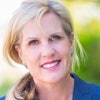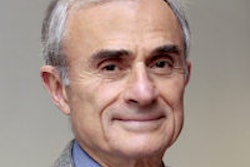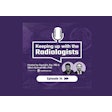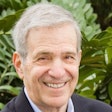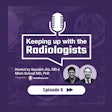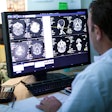Residents may not be thrilled about the tough job market, but data from a massive annual survey of radiology jobs show little change from year to year, and the results even predict a small net gain in jobs for 2013 and beyond, according to a presentation at the recent RSNA 2013 meeting.
The American College of Radiology (ACR) annual survey of anticipated hiring in radiology predicts a net gain of more than 1,500 jobs in 2013. The survey is sent out every January and was completed by more than 450 group and department heads, representing roughly 7,000 practicing U.S. radiologists.
"Presently, there should be a job for all finishing residents," Dr. Edward Bluth, chairman emeritus of the Ochsner Clinic Foundation and chair of the ACR's Commission on Human Resources, told RSNA attendees. "There are around 1,200 of you who finish a year. And there will be jobs for those who want to switch jobs as well, but the job may not be in your preferred geographic location, subspecialty, or practice."
The geographic mismatch certainly rings true for many residents: The survey found that the fewest jobs will be available in the Northeast, where population centers are larger and more radiologists might prefer to live and work.
"The largest number of jobs will be in the South and the fewest in the Northeast," Bluth said. "That's something of a problem, because we know that the largest training programs are in the Northeast, and that causes some disruption for people who would prefer to be up there. But I think we need to face reality: There are fewer jobs in the East and the Northeast."
While only a time machine can predict the future flawlessly, the survey represents a major improvement over the predictions based on anecdotal reports that were once the norm, according to Bluth. The survey has shown remarkable accuracy when compared with actual trends year after year. For example, predictions for 2012 diverged from actual hiring by less than a percentage point.
"I think we have a reliable survey," he said. "It's not made up and it's not anecdotal in my experience."
Hiring plans
Each year, the survey asks the heads of radiology groups and departments about their staffing decisions.
"The primary focus to ask the head of the group, what is the present makeup of this group, who did you hire last year, who do you plan to hire next year," Bluth said.
The questionnaire is sent out in January and due back in March for analysis. This year's survey had 462 responses from group leaders representing 7,206 radiologists (22% of all active U.S. radiologists), 21,245 radiologic technologists, and 658 midlevel practitioners.
The survey asked the recipients about their current number of radiologists, as well as the number hired in 2012 and how many they plan to hire in 2013 and 2016. They were also asked to name which subspecialty was used as the primary reason for hiring each radiologist.
The majority of respondents were in the South and the West, while the fewest were in New England. Private practice groups represented 54% of respondents, and academia accounted for another 19%. Academic clinics accounted for 14%, hospitals for 10%, and corporate employees and government radiologists each accounted for about 1%, Bluth said.
Based on the results, the workforce includes approximately 2,100 radiologists older than 65 years, 6,800 between 56 and 65, and about 3,100 younger than 35, Bluth noted.
"The age distribution in most geographic areas was similar, but in the Southwest there were more individuals in the 25 to 35 age range," he said. "In the mid-Atlantic, there were more people younger than 35."
About 22% of the workforce is general radiologists, according to the survey. The largest subspecialty was interventional, comprising 11.4% of all radiologists. The next largest group was neuroradiology (11.2%), followed by body imaging (10.2%), breast imaging (8.5%), musculoskeletal imaging (8%), nuclear medicine (4.8%), pediatrics (4%), MRI (3%), ultrasound (3%), chest imaging (2.4%), and teleradiology (2.3%).
The percentage of general radiologists fell sharply, from 37% in 2011 to the 22% reported for 2012, but the shortfall could be attributed at least in part to changes in the survey questions.
The drop in general radiologists was more than made up for by increases in most of the principal subspecialties, including interventional, neuroradiology, body imaging, breast imaging, and on down the list, Bluth said. Ultrasound bucked the trend, with slightly fewer radiologists in 2012 compared to 2011 (both around 3%).
A series of chi-squared tests performed on the 2012 and 2013 surveys showed there was no statistically significant difference between the samples. Additionally, there was no significant difference between the actual number of people hired in 2012 and the number of hires predicted for 2012.
"We found that the survey instrument is predictable and accurate," Bluth said. In fact, "the job market should remain flat up to 2016." The 2016 data are probably less accurate, but most people know who they're going to hire next year, he said.
Change is the only constant
How could the job picture be transformed in the long term?
"Remember there are 6,800 radiologists presently over the age of 56 ... and 2,100 over the age of 65 who could retire if they wanted to," Bluth said. "That would definitely change the demographics of the workforce and would change the availability of jobs, so don't be totally depressed by these numbers."
Another wild card for long-term planning is the Affordable Care Act, which is expected to significantly increase the number of insured patients and thus create new demand for radiologists.
Future reimbursement levels are uncertain as well, as is the scope of the future workforce, Bluth said.
"We are moving away from just a binary compilation to determine staff time, and moving to a value calculation as well," he said. "So radiologists will, for example, be needed to guide appropriate use and safety issues with medical staff. There may be a need for radiologists for those functions and not simply producing images, and not simply counting the number of exams. So the workforce may be dramatically changed based on these ideas."
Staffing levels may change positively or negatively based on these expectations, and they may depend on whether the government agrees with the value-based criteria the ACR has been advocating, Bluth said.
This year's survey results were published in the Journal of the American College of Radiology (October 2013, Vol. 10:10, pp. 750-756).
